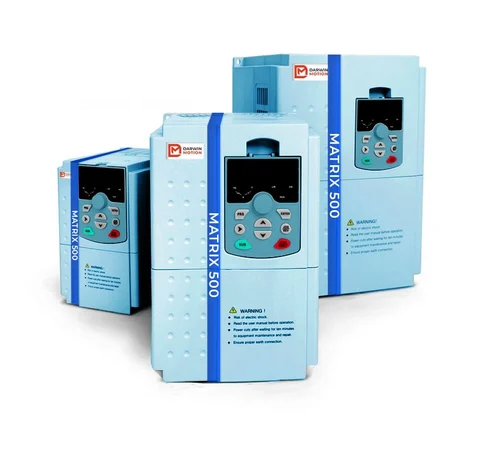Posted on 18th Oct 2024

Variable Frequency Drives (VFDs) are essential components in modern motor control applications. For a 15 horsepower (HP) motor, selecting the appropriate VFD can significantly enhance performance, energy efficiency, and operational flexibility. This article explores the key aspects of VFDs for 15 HP motors, including their benefits, features, selection criteria, and installation considerations.
A Darwin Motion Variable Frequency Drive is an electronic device that controls the speed and torque of an electric motor by varying the frequency and voltage of the power supplied to it. VFDs are commonly used in industrial applications to improve efficiency, reduce energy consumption, and allow for precise control of motor-driven equipment.
Energy Efficiency: VFDs allow for speed adjustments according to load requirements, reducing energy consumption significantly. For applications with variable loads, this can lead to substantial cost savings.
Extended Equipment Life: By controlling the starting and stopping of the motor smoothly, VFDs reduce mechanical stress, resulting in longer equipment life and lower maintenance costs.
Improved Process Control: VFDs provide precise control over motor speed, enabling better process optimization in applications such as pumps, fans, and conveyors.
Reduced Inrush Current: VFDs minimize the inrush current that occurs during motor startup, which protects electrical components and reduces voltage drops in the system.
Operational Flexibility: With the ability to adjust motor speed on demand, high frequency drive enhance the flexibility of operations, allowing for better responsiveness to changing conditions.
Power Rating: Ensure the VFD can handle at least the rated horsepower of the motor. For a 15 HP motor, look for a VFD rated for 15 HP or higher.
Input Voltage: Match the VFD’s input voltage with your electrical supply. Common voltages include 230V, 460V, and 575V.
Control Method: VFDs can employ different control methods such as Volts/Hz, vector control, or direct torque control. Choose one based on application needs.
User Interface: A user-friendly interface facilitates programming and monitoring. Look for features like digital displays, keypads, or connectivity options for remote monitoring.
Protection Features: Ensure the VFD has built-in protection features such as overcurrent, overvoltage, and thermal overload protection to safeguard both the drive and the motor.
Communication Protocols: If your application requires integration with other systems, consider a VFD that supports communication protocols like Modbus, Profibus, or Ethernet/IP.
Determine Application Requirements: Assess the motor's application, including load type, required speed range, and operating conditions.
Calculate Total Amperage: Check the motor’s full-load amperage (FLA) rating to ensure the VFD can accommodate the motor's electrical demands.
Consider Environmental Factors: Consider the environment where the VFD will be installed. Options like NEMA-rated enclosures can provide additional protection in harsh conditions.
Vendor Reputation and Support: Choose a reputable manufacturer with good customer support to assist with installation and troubleshooting.
Mounting Location: Install the VFD in a clean, dry, and well-ventilated area to prevent overheating.
Wiring and Connections: Follow electrical codes and guidelines for wiring connections. Ensure proper grounding and use appropriate cables for power and control circuits.
Parameter Settings: Configure the VFD settings according to the motor's specifications and application needs. This may include adjusting acceleration and deceleration times.
Testing and Commissioning: After installation, conduct thorough testing to ensure the VFD operates as intended and meets performance expectations.
A Variable Frequency Drive for a 15 HP motor is an invaluable tool that enhances efficiency, performance, and control in various applications. By understanding the benefits, features, and selection criteria, businesses can make informed decisions that lead to improved operational efficiency and reduced energy costs. Whether in manufacturing, HVAC, or water treatment, investing in a quality VFD will yield significant long-term advantages.